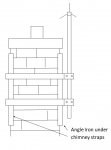mmckenna
I ♥ Ø
Would it make sense for me to just order a 50’ LMA-400 run with Type-N connectors on each end, then I can get two different jumpers one for my current radio, and one for the radio I plan to purchase in the future (Yaesu FT-400)?
It would if you can return the 150' of RG213.
If you can't, you could cut it to length and reterminate the cable with a new connector.
LMR-400 is pretty good stuff for hobby use. But be careful about asking for the "best". You can't afford the best, and it wouldn't be realistic anyway.
Finally, where is the best outlet to purchase Times Microwave cables?
There are a number of places to purchase it from if you can't pick it up for free from PRCGuy. Just make sure if you buy it, you get real Times-Microwave LMR-400, not the "equivalent" stuff that can often be cheap knock off from China.
I have had good results from The Antenna Farm on other small purchases. You can order custom lengths and connectors if you want.


